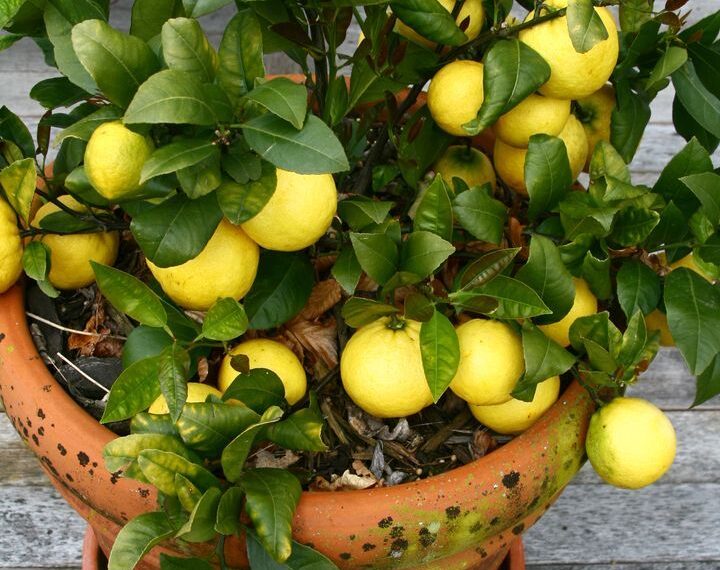Growing a lemon tree in a pot is a rewarding project, allowing you to enjoy fresh lemons even if you lack a garden or live in a colder climate. Lemon trees are surprisingly adaptable and can thrive in containers if provided with the right care. In this article, we’ll guide you through the essential steps to grow a healthy, fruit-producing lemon tree in a pot.
1. Choosing the Right Lemon Tree Variety
When growing a potted lemon tree, select a variety that is well-suited for container life and productive in small spaces. Here are a few excellent choices:
- Meyer Lemon: Known for its sweet, thin-skinned fruit, this dwarf variety is ideal for pots and colder regions.
- Ponderosa Lemon: A hybrid variety, it produces large fruit and thrives well indoors.
- Lisbon Lemon: While this is a standard lemon, it can grow in a pot if pruned regularly.
2. Selecting the Perfect Pot
The pot you choose can significantly impact the growth of your lemon tree. Consider these factors:
- Size: Choose a container with at least a 15- to 20-gallon capacity, approximately 12-18 inches in diameter and depth, to give the roots ample space.
- Material: Use clay or ceramic pots for better breathability, though plastic pots are lightweight and easier to move.
- Drainage: Ensure the pot has drainage holes at the bottom to prevent root rot, which lemon trees are susceptible to.
3. Using the Right Soil Mix
Lemon trees need a well-draining soil mix to thrive. Look for a commercial potting mix labeled for citrus plants, or create your own blend:
- DIY Mix: Combine potting soil, sand, and perlite in equal parts. This provides the drainage and aeration needed for healthy root growth.
- pH Level: Aim for a slightly acidic pH, between 5.5 and 6.5, which is ideal for citrus plants.
4. Planting Your Lemon Tree
Once you have the pot and soil ready, it’s time to plant your lemon tree:
- Remove the Tree: Gently take the tree out of its nursery pot, handling the roots carefully.
- Positioning: Place the tree in the center of the pot and ensure the root ball is slightly above the soil line to prevent waterlogging.
- Backfill Soil: Add soil around the root ball, firming it gently. Water thoroughly to help settle the soil.
5. Providing Optimal Sunlight
Lemon trees are sun-loving plants and need plenty of direct sunlight:
- Indoor Placement: Place your potted lemon tree near a sunny south-facing window where it can receive at least 8 hours of sunlight daily.
- Outdoor Placement: If keeping the plant outdoors, position it where it will get full sun. Rotate the tree periodically for even growth.
6. Watering Properly
Over-watering is one of the most common mistakes when caring for a potted lemon tree. Here’s how to get it right:
- Frequency: Water when the top inch of soil feels dry. In warmer weather, this could mean watering every 3-4 days.
- Technique: Water deeply until it flows out of the drainage holes, ensuring that the entire root system is hydrated.
- Humidity: Lemon trees benefit from occasional misting, especially if they are grown indoors where air tends to be drier.
7. Fertilizing for Fruit Production
Lemon trees in pots need extra nutrients to produce fruit:
- Citrus-Specific Fertilizer: Use a balanced, slow-release fertilizer designed for citrus trees, following the instructions on the label.
- Frequency: Feed every 4-6 weeks during the growing season (spring to early fall) and reduce feeding in winter.
- Essential Nutrients: Ensure your tree gets enough nitrogen, magnesium, and iron for optimal growth and fruit production.
8. Pruning and Shaping
TO CONTINUE READING THE ARTICLE PLEASE SEE PAGE 2




